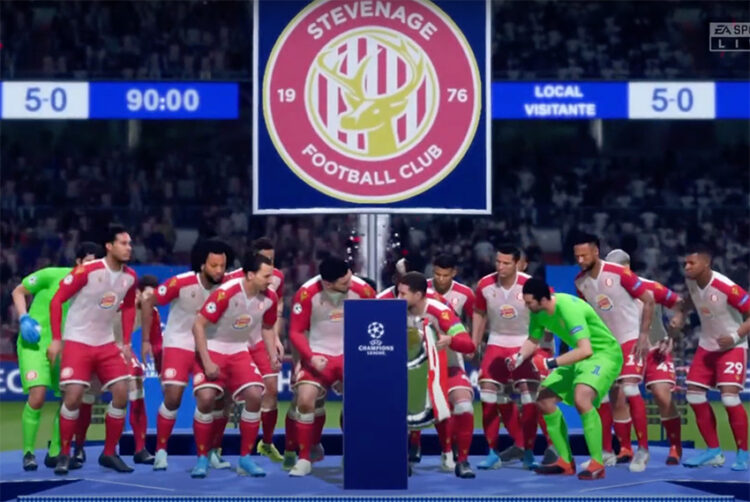OTT brings new engagement and monetisation opportunities in sport

Opinion
Combining fan data from OTT with that from other social media can open up exciting new revenue streams — and not just for top-tier sports.
In early February, Fox, Walt Disney’s ESPN and Warner Bros Discovery (WBD) announced that they were launching a joint venture sports streaming service targeting younger audiences.
In a ground-breaking move, the service will combine their broad portfolio of professional and college sports rights and include linear channels as well as streamed content, capitalising on the market being created for streaming sports services and providing another way to monetise increasingly costly sports rights.
Disney, Fox and Warner Bros Discovery to launch sport streaming service
Targeting younger fans
The creation of this venture reflects an industry that is being transformed as fans are increasingly turning to digital channels for their sports consumption.
Over-the-top (OTT) platforms such as DAZN, Amazon Prime and Apple TV+ accounted for 21% of media rights value in 2023, up from 13% in 2022. For younger audiences in particular, digital services are now their preferred platform for consuming content.
This is not not just about a shift from traditional linear consumption to streaming, but about young people wanting a much more holistic experience with sports media. They want to follow their teams on social media, watch online content outside live matches and increasingly expect the targeted and personalised content that data-driven marketing can deliver.
For sports bodies, there’s an opportunity to combine fan data from OTT with that from other social media to open up exciting new revenue streams. The ability to target specific fans can, in turn, be used to increase sponsorship effectiveness and drive match-day and merchandising revenue.
Driving sponsorship revenues
Fans have strong emotional connections with their teams that are much stronger than standard influencer engagements and this offers big opportunities for brand amplification.
However, for brands used to measurable ROI, it can be hard to justify the spend to put a logo on the front of a kit or the side of a stadium. As sports build their digital interactions, we believe there will be greater opportunities to accrue data and prove the effectiveness with AI analytics.
Indeed, new service providers such as Hookit are using AI software to track social media data in real time and estimate earned media value. This has been used to great effect to help brands such as Red Bull, Bose and Visa assess the value of their sponsorship relationships.
Traditionally, sports sponsorship favoured the biggest teams with the largest audiences. However, lower-tier sports also have passionate fans. Digital media can mean small investments by sponsors can generate massive publicity if aligned with effective targeting and inspired creativity.
A good example is Burger King’s successful partnership with Stevenage FC on the Fifa video game. Fans were encouraged to share social media clips of famous players in the game wearing the Stevenage kit. A £50,000 sponsorship partnership generated £2.5m of earned media on the game, with august (virtual) players such as Lionel Messi sporting the kit.
Increasing revenue from fans
Match-day and merchandising are the revenue streams that sports organisations can most directly control. With data, we see opportunities for sports to target and tailor messages to particular fan segments to drive growth in these revenues.
Digital marketing allows brands to identify who are their most likely customers, when they are most likely to purchase and what message will stimulate conversion. Effective targeting can increase revenue and even build new fanbases.
For example, Swedish team AIK generated over €100K profit from season ticket sales by tailoring their marketing to the 2% of fans most likely to buy a season ticket. Meanwhile, Los Angeles FC created a database of potential fans and, with tailored messaging, sold 17.5K memberships and 100% of executive boxes for its first season.
Opening the door to new sports
The success of Fox, Disney and WBD’s OTT offering will be strongly linked to their premium (and expensive) tier one sports right. However, their combined platform may be able to open up the market to lower-tier sports by attracting a critical mass of fans who can then dip into more niche sports, whose economics may not work on a stand-alone basis.
For many lower-tier sports, the cost of producing quality live content has been prohibitive. However, evolving production technologies are now increasing the feasibility of live content production.
While major broadcasters may not want to commit to diverting spend away from the top sports, the lower costs of production in lower-tier sports, and the new revenue models that are emerging in the sector (such as shared advertising and pay-per-view revenue), make it a more attractive opportunity.
Put together, these developments could make the new OTT proposition a very different beast from traditional sports TV and a very exciting one for both sports organisations and fans, making the evolution of the media landscape as we know it quick and dramatic.
 Tabby Elwes is partner and head of media practice at CIL Management Consultants
Tabby Elwes is partner and head of media practice at CIL Management Consultants




